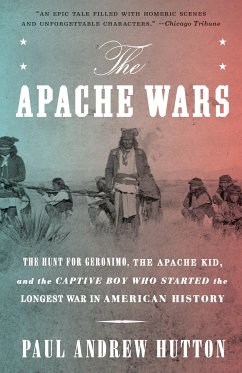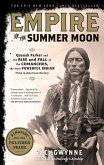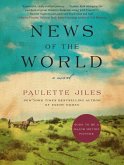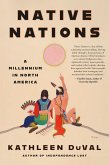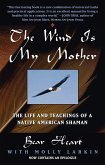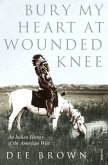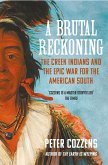Prologue
On a crisp morning in late January, the boy tended his stock as he watched the dust cloud rising to the south, at the far end of the narrow timbered valley. Felix was almost twelve, but short and scrawny for his age, with a mop of red hair and fair skin. When the boy saw riders emerging one by one from the cloud of dust, their ponies splashing across the shallow creek, he ran to the little grove of peach trees some three hundred yards from the ranch buildings where his mother and sister were. He knew this area was contested ground, in the heart of what the Mexicans, and the Spanish before them, had named Apacheria. The Mexicans had failed to settle the valley, driven out by the fearsome Apaches who lived in the mountains to the east and north.
A dozen Apaches, wildly painted and heavily armed, galloped onto the ranch. They swept past the buildings to gather up all the horses and cattle. His heart pounding, Felix climbed a peach tree and hid himself as best he could. The Apache leader rode up to the tree as his men began herding the horses and cattle back down the valley and looked up at the terrified boy. Felix expected to be killed instantly, but instead the Apache laughed and motioned for him to climb down. Felix obliged. The Apache, who was called Beto, had a heavily scarred face that bore the imprint of some terrible battle in which he had lost an eye. Felix also had but one eye. The Apache pulled him onto the back of his pony, and off they galloped after the warriors.
These Apaches were of the Aravaipa band, who lived to the northeast of the Sonoita Valley. The Aravaipa would come to call the kidnapped boy Coyote, after their trickster god, because they could never decide if he was friend or foe. Years later, white men would name him Mickey Free. The boy&rsquo s kidnapping started the final struggle for Apacheria&mdash the longest war in the history ofthe United States. This conflict would leave a trail of blood from the Pecos River in Texas through New Mexico and Arizona and deep into Mexico from 1861 to 1886. All sides in that conflict blamed Mickey Free for starting it. In time, the boy would come to play a pivotal role in the war, moving back and forth between the harshly conflicted worlds of the Apache and the white invader, never really accepted by either but invaluable to both.
This is Mickey Free&rsquo s story, but it is also the story of his contemporaries&mdash both friend and foe, red and white&mdash whose lives were shaped by the violent history of the deserts and mountains of the American Southwest and northern Mexico. It was a land where every plant bore a barb, every insect a stinger, every bird a talon, every reptile a fang&mdash an inhospitable, deadly environment known to the outside world as Apacheria. In this bleak and unforgiving world, the one-eyed, deeply scarred Mickey Free was at home.
Hinweis: Dieser Artikel kann nur an eine deutsche Lieferadresse ausgeliefert werden.
On a crisp morning in late January, the boy tended his stock as he watched the dust cloud rising to the south, at the far end of the narrow timbered valley. Felix was almost twelve, but short and scrawny for his age, with a mop of red hair and fair skin. When the boy saw riders emerging one by one from the cloud of dust, their ponies splashing across the shallow creek, he ran to the little grove of peach trees some three hundred yards from the ranch buildings where his mother and sister were. He knew this area was contested ground, in the heart of what the Mexicans, and the Spanish before them, had named Apacheria. The Mexicans had failed to settle the valley, driven out by the fearsome Apaches who lived in the mountains to the east and north.
A dozen Apaches, wildly painted and heavily armed, galloped onto the ranch. They swept past the buildings to gather up all the horses and cattle. His heart pounding, Felix climbed a peach tree and hid himself as best he could. The Apache leader rode up to the tree as his men began herding the horses and cattle back down the valley and looked up at the terrified boy. Felix expected to be killed instantly, but instead the Apache laughed and motioned for him to climb down. Felix obliged. The Apache, who was called Beto, had a heavily scarred face that bore the imprint of some terrible battle in which he had lost an eye. Felix also had but one eye. The Apache pulled him onto the back of his pony, and off they galloped after the warriors.
These Apaches were of the Aravaipa band, who lived to the northeast of the Sonoita Valley. The Aravaipa would come to call the kidnapped boy Coyote, after their trickster god, because they could never decide if he was friend or foe. Years later, white men would name him Mickey Free. The boy&rsquo s kidnapping started the final struggle for Apacheria&mdash the longest war in the history ofthe United States. This conflict would leave a trail of blood from the Pecos River in Texas through New Mexico and Arizona and deep into Mexico from 1861 to 1886. All sides in that conflict blamed Mickey Free for starting it. In time, the boy would come to play a pivotal role in the war, moving back and forth between the harshly conflicted worlds of the Apache and the white invader, never really accepted by either but invaluable to both.
This is Mickey Free&rsquo s story, but it is also the story of his contemporaries&mdash both friend and foe, red and white&mdash whose lives were shaped by the violent history of the deserts and mountains of the American Southwest and northern Mexico. It was a land where every plant bore a barb, every insect a stinger, every bird a talon, every reptile a fang&mdash an inhospitable, deadly environment known to the outside world as Apacheria. In this bleak and unforgiving world, the one-eyed, deeply scarred Mickey Free was at home.
Hinweis: Dieser Artikel kann nur an eine deutsche Lieferadresse ausgeliefert werden.

